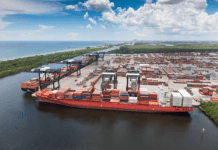
According to the US Government agency National Highway Traffic Safety Administration (NHTSA), commercial truck occupants accounted for 15% of roadside fatalities, marking a 35% increase over the past decade.
Proactively identifying driver fatigue or distraction can significantly reduce accidents across commercial fleets, from long-haul trucks to last-mile delivery vehicles and rental cars, said NHTSA. Just as first offense DUI attorneys are instrumental in navigating the legal complexities of a DUI case, understanding the implications of fatigue and distracted driving is equally important. Utilising video evidence for fault determination can not only slash or mitigate insurance expenses and clear drivers of culpability but also foster a culture of safer driving practices.
According to a recent report from global technology intelligence firm ABI Research, the adoption of video telematics-based capabilities is fueling a projected 24% growth in video solution shipments by 2030, with anticipated revenues surpassing US$10 billion.
Commercial video telematics providers are advancing their offerings by introducing features like gesture and object recognition, 360-degree in-cab and road views, and live streaming for up to eight cameras.
Moreover, the combination of edge computing technology and improved connectivity is driving greater demand for real-time data capture and analysis.
Lytx, MiX Telematics, Samsara, Verizon Connect, Geotab, Zonar, PowerFleet, Trimble, and SmartDrive all offer solutions with established use cases. Moreover, the monitoring of cargo is an emerging application for fleets, where video-based cargo monitoring serves as a valuable alternative or addition to existing IoT solutions.
Emerging solution providers like SkyBitz, Roambee, and Motive are making strides in this sector.
“The advancement of dash cams surround view cameras in terms of capabilities has led to increased use cases to enable driver safety and, in turn, increased adoption in commercial fleets. Regulatory initiatives in North America, Europe, and China are also bringing more tech into commercial fleets,” explains Adhish Luitel, supply chain management & logistics senior analyst at ABI Research.





